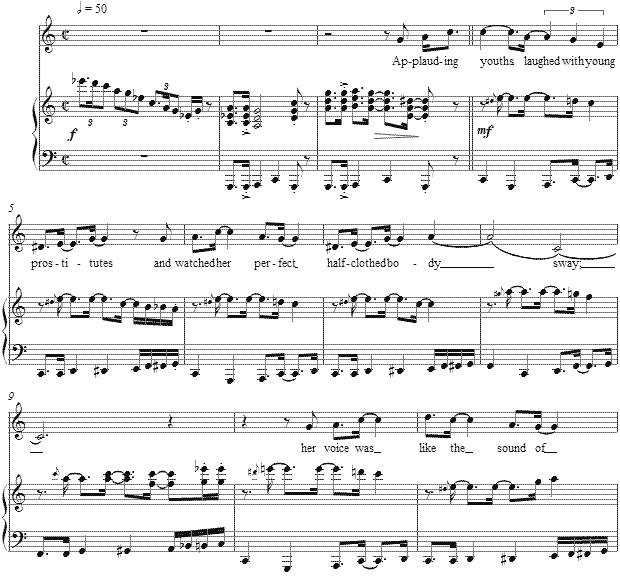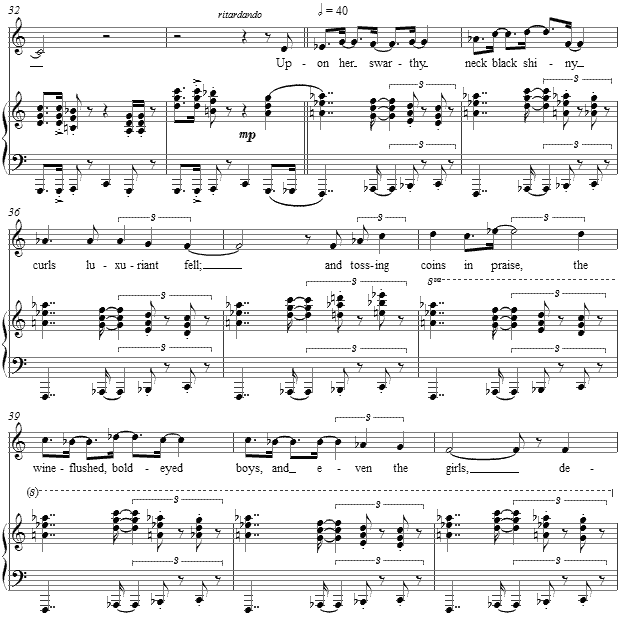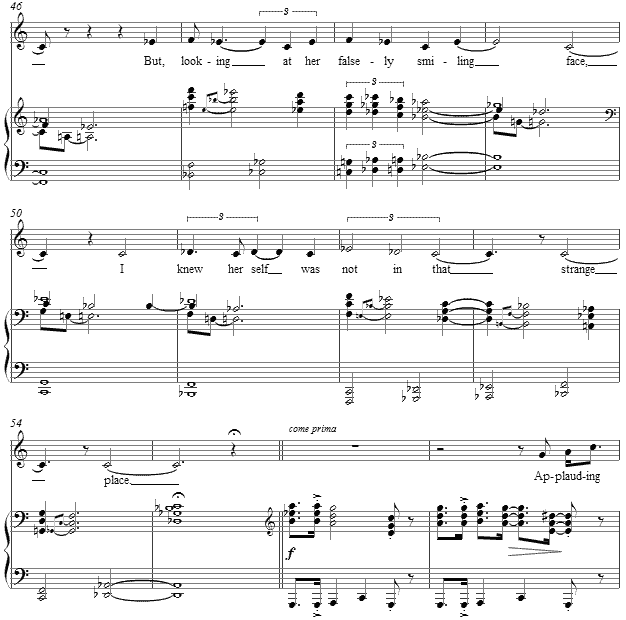Music and Texts of GARY BACHLUND
Vocal Music | Piano | Organ | Chamber Music | Orchestral | Articles and Commentary | Poems and Stories | Miscellany | FAQs
The Harlem Dancer - (2009)
Claude McKay
for medium voice and piano
Applauding youths laughed with young prostitutes
And watched her perfect, half-clothed body sway;
Her voice was like the sound of blended flutes
Blown by black players upon a picnic day.
She sang and danced on gracefully and calm,
The light gauze hanging loose about her form;
To me she seemed a proudly-swaying palm
Grown lovelier for passing through a storm.
Upon her swarthy neck black shiny curls
Luxuriant fell; and tossing coins in praise,
The wine-flushed, bold-eyed boys, and even the girls,
Devoured her shape with eager, passionate gaze;
But looking at her falsely-smiling face,
I knew her self was not in that strange place.[ 5 pages, circa 3' 00" ]
Claude McKay
Claude McKay (1889-1948) was a Jamaican-born writer and poet. He was an informal communist in his early life, but after a visit to the Soviet Union and like Paul Robson's experiences, McKay concluded that communism could not deliver on the promises it made. McKay was involved in the Harlem Renaissance, living primarily in New York (1913-1919). his novels include: Home to Harlem (1928), Banjo (1929), and Banana Bottom (1933), as well as a collection of short stories, Gingertown (1932), and two autobiographical works, A Long Way from Home (1937) and Harlem: Negro Metropolis (1940). His book of poetry, Harlem Shadows (1922) was among the first books published during the Harlem Renaissance. His book of collected poems, Selected Poems (1953), was published posthumously, and the James Weldon Johnson collection, The Book of American Negro Poetry, 1922, included many works of McKay's. Through his works, he showed himself an advocate for civil liberties, racial solidarity in a time when it was crucial to developing the community, and in African American literacy. He spent 15 years in England, Russia, France, Spain, and Morocco before returning to New York in 1934.
The setting is not formally a blues structure, though lower neighbors to the major third as well as lowered thirds in triadic harmony give the setting its Americana flavor. With the exception of the opening gestures and bridge material, it is essentially a two-voice accompaniment rich in syncopation. The first four lines of the text are represented in this song form as a verse, which then repeats with few changes for the next four lines.
The B section of this song form slows the tempo and its major-minor seven chords make richer the harmonic texture as the first two verses yield to this contrasting section. The poet's revelation of the "speaker" in the text seeing a different reality than others in attendance at this scene is accompanied by a lessening of forward motion, on the one hand, but greater chromatic complexity in its four- and five-note "slip" chords.
The final lines of the text cadence on a "substitute" of false dominant, the lowered second degree of the scale, before a reprise of the opening lines of text and musical material, and making a coda from repetitions of the title of the text itself, "the Harlem dancer."
The score for The Harlem Dancer is available as a free PDF download, though any major commercial performance or recording of the work is prohibited without prior arrangement with the composer. Click on the graphic below for this piano-vocal score.



